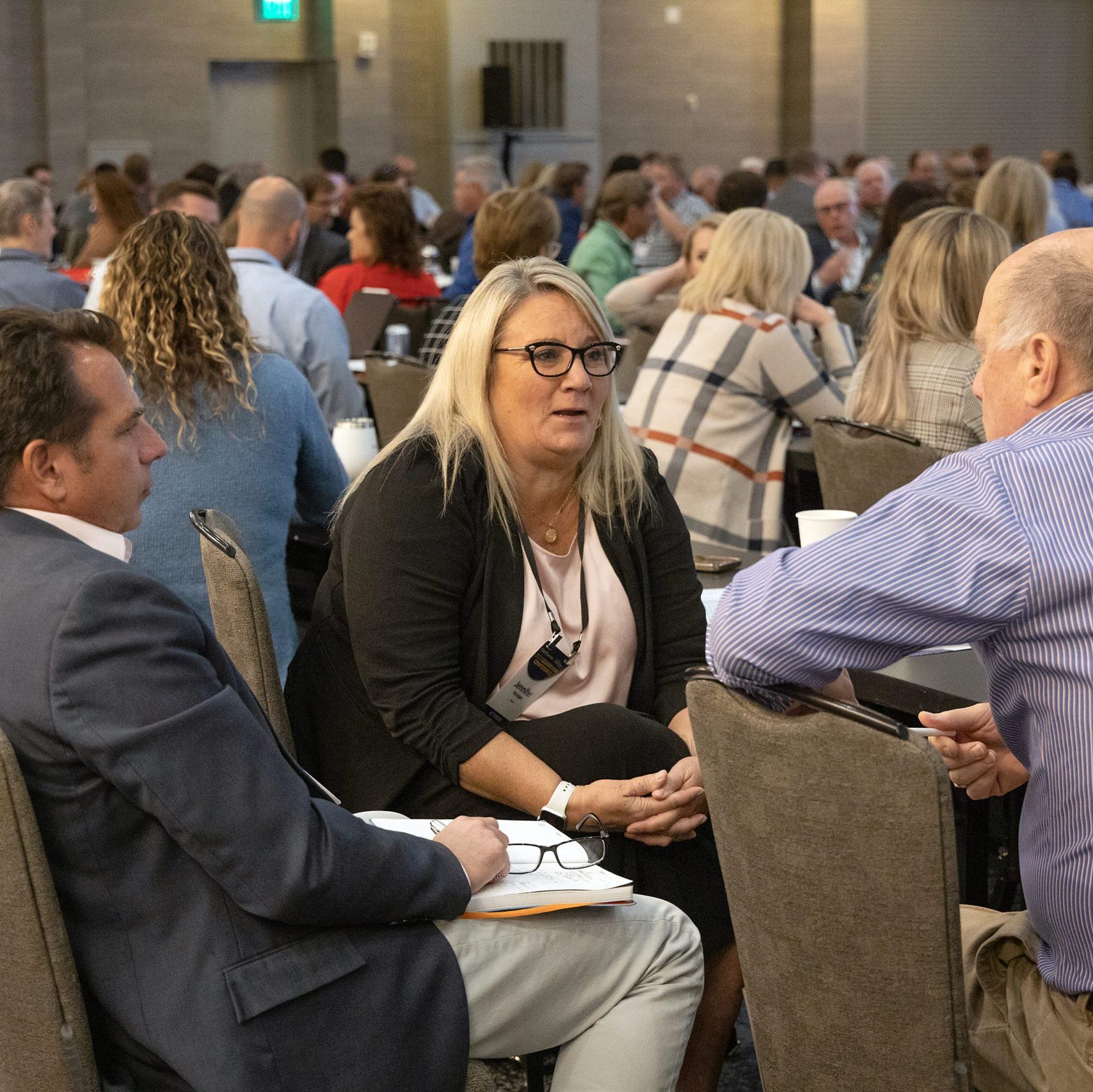
Too Little, Too Late? Why Cultural Integration Must Start At Day One Of M&A


In the high-stakes mergers and acquisitions landscape, companies invest enormous time and resources in setting the financial and operating value creation plan. However, cultural alignment—a critical factor that can make or break the success of an integration—is often relegated to a lower priority.
That is, until a major issue arises, by which point it’s harder and more costly to address. A 2023 Bain report highlighted that while culture is a focus area for 80 percent of integrations, 75 percent of acquirers still encounter significant cultural roadblocks, causing disruptions and even failures in achieving intended synergies. This gap underscores that simply acknowledging that culture matters isn’t enough; organizations need a proactive, well-planned approach to achieve a successful cultural merger that becomes a mechanism to accelerate the realism of the deal thesis.
The problem is that most companies fundamentally underestimate the difficulty of cultural integration. Many assume that similar-sounding values or practices will naturally align, or that culture will “take care of itself” once structural and operational synergies are in place. However, cultural alignment is not an organic process, and superficial efforts often fail to reveal underlying differences that can derail collaboration and existing ways of working. Without a deliberate approach to address such differences, even minor cultural misalignments can snowball into larger issues, create inefficiencies and undermine strategic goals. Leaders who prioritize culture early can accelerate the integration process, foster mutual understanding, reduce friction and ultimately unlock the full value of the acquisition.
Cultural alignment is often misunderstood in the M&A context, with several misconceptions shaping how companies approach—or fail to approach—it. One of the most common is believing that cultural issues can be addressed later, that “we’ll get to culture” once financial and operational priorities are in place. However, cultural differences that go unaddressed early can create rifts that are difficult to bridge post-merger, slowing progress toward the target value. As one CEO of a FTSE 250 company we worked with said, “Had we not spent the time upfront on understanding our combined organization’s cultural similarities and differences and ways of working, we would never have gotten to the level of clarity of our business priorities and strategic objectives.”
Another misconception is that cultural integration is solely an HR responsibility. While HR teams play a crucial role, relying on them exclusively to drive culture can send a signal that cultural alignment is peripheral rather than central to the merger’s success. In a recent PLC Board meeting, the CHRO presented aspirational culture and values to gather Board input, only to hear, “This is amazing work, but coming from HR instead of the CEO or Business sends the wrong message to your organization.” Effective cultural integration requires buy-in and active engagement from CEOs and senior leaders across the combined organization. When top leadership champions cultural alignment, it becomes a collective responsibility, and employees across the organization are more likely to see its value.
Companies also often fall into the trap of using superficial indicators to gauge cultural fit. Relying on sources like Glassdoor engagement surveys or brief senior-level interactions may provide limited insights, but they fail to capture the full picture of how “work actually gets done.” Without a nuanced understanding of these deeper aspects of how work gets done, organizations may misinterpret or overlook critical differences that could lead to misalignment and friction down the road.
For companies navigating the complex terrain of M&As, a strategic and proactive approach to cultural integration can be the difference between a successful merger and a missed opportunity. Here are key strategies to align cultures effectively from the outset:
A comprehensive cultural diagnostic goes beyond a basic engagement survey, delving into the actual ways work is completed across teams and departments. Unlike annual engagement surveys, which typically capture high-level sentiment, a cultural diagnostic reveals deeper operational dimensions, such as decision-making processes, collaboration styles and attitudes toward risk. This diagnostic process should combine surveys, focus groups and interviews to obtain a comprehensive, side-by-side comparison of the merging organizations. By covering a “diagonal” representation across various levels and departments or the entire workforce, it ensures insights are drawn from all areas of the organization, capturing the nuances often missed in surface-level assessments.
Beyond the valuable insights gained to help understand the current state of both company cultures, the diagnostic sends a very powerful message to employees. One company made a conscious decision to deploy the culture survey enterprise-wide to 5,500 employees as a signal of inclusivity, inviting everyone to leave their mark on the aspirational culture and values. A business leader later remarked to our team, “I can’t believe they released the high-level survey results to both organizations to see where we are similar and different. My team said this is one of the bravest actions a leadership team could do, and it became a powerful tool for integrating into the new company.”
While focusing on cultural similarities can help build initial common ground, overemphasizing them may lead to “false positives,” where shared values like “customer-first” or “innovation” mask deeper differences in how those values are enacted. Most organizations over-index on similarities, even when they’ve taken steps to understand them, at the expense of addressing cultural differences. Companies naturally gravitate toward what looks and feels familiar but fail to confront uncomfortable differences in how things get done, which can create friction as integration efforts progress.
For instance, both companies may emphasize “performance,” but one may define it through individual accountability while the other prioritizes performance through team collaboration. Real differences, such as varying attitudes toward hierarchy or risk, can remain hidden unless they’re explored in depth. Recognizing these nuances from the start helps prevent clashes that could later derail integration efforts.
As companies prepare their integration roadmap, leadership teams often feel the pull to dive straight into setting strategic priorities and operational plans. However, our experience shows that teams gain a significant advantage by first carving out time to focus on culture and leadership. Starting the agenda with these elements serves as a springboard for more productive and meaningful integration discussions.
Leadership teams that invest in understanding the “insider’s guide” to each other—exploring their histories, moments of peak performance, times of greatest challenge and how they make decisions and execute plans—create a shared foundation. This deeper understanding goes beyond surface-level alignment, fostering more courageous and effective conversations that are critical for successful integration.
How executive leaders act sets the tone for the broader organization. It’s essential for the leadership team to define and own a set of behaviors specifically for the duration of the integration process. These behaviors, co-created by leaders from both organizations, outline how they must act to effectively lead and deliver the integration plan. In any cultural transformation, the broader organization closely observes how the executive team shows up during the integration process.
Role-modeling these behaviors, critical to success in the new company, sends a powerful signal, setting the tone for the entire organization. The most effective leadership teams not only define these behaviors but also commit to them and hold one another accountable—both individually and collectively—to ensure success. Several leadership teams begin key integration meetings by reviewing the new leadership behaviors, discussing how effectively these behaviors are reflected in their ways of working and adjusting as needed to stay aligned with the integration’s goals.
Simulations are powerful tools for identifying potential cultural friction points and fostering alignment in a real-world context. Creating high-touch, simulated experiences lets leaders from both companies practice decision-making and conflict resolution in a controlled environment, providing firsthand experience of how cultural dynamics might play out in the combined organization. This not only brings cultural differences to light but also allows leaders to address them proactively.
By simulating the new organization, leaders gain insights into the values and processes to carry forward and the best practices and experiences their new colleagues are most proud of, clarifying the vision for the future culture. Simulations create a “laboratory” for alignment, equipping leaders to navigate challenges together and solidify their approach for the broader organization. This allows them to practice the new company, gaining a much better understanding of the value-creation and operating dynamics of the combined business, all while experiencing the new culture, values and behaviors.
Measuring the success of cultural integration is essential to ensure alignment efforts truly benefit the organization. Establishing key metrics that reflect cultural and business outcomes—such as cost savings, decision-making speed and employee engagement—provides tangible insights into progress. Behavioral changes, like improved collaboration and trust, further signal successful integration and can be reinforced by incorporating these insights into performance management processes, such as promotion and bonus decisions.
Moreover, tracking cultural evolution through sentiment analysis, pulse surveys, focus groups and leadership feedback sessions can help organizations monitor progress and address emerging issues. Consistent follow-up is key. The most toxic outcome is conducting a diagnostic and not acting on it. By continuously engaging with employees and acting on feedback, organizations can ensure that cultural integration remains a dynamic and adaptive process, fully aligned with business objectives.
Proactive cultural coordination is not just an enabler of smooth integration—it’s a strategic lever for success. When failure is not an option, companies that thrive in M&As take intentional steps to make culture front and center early and often in the integration process. They challenge assumptions about cultural similarities, address potential differences and prioritize culture as a foundation for better strategic and operational decisions.
These companies design leadership behaviors for executives to live by, ensuring they role-model the new culture while empowering others to do the same. They go further by using simulations to help leaders practice living the new culture and values, understanding how these drive business outcomes. Finally, they measure and track cultural evolution continuously, realizing a performance premium by staying committed to these practices. By addressing culture with this level of rigor and intentionality, organizations can transform cultural friction into a strategic advantage, accelerating the realization of financial synergies and achieving the full potential of their M&A efforts.



0

1:00 - 5:00 pm
Over 70% of Executives Surveyed Agree: Many Strategic Planning Efforts Lack Systematic Approach Tips for Enhancing Your Strategic Planning Process
Executives expressed frustration with their current strategic planning process. Issues include:
Steve Rutan and Denise Harrison have put together an afternoon workshop that will provide the tools you need to address these concerns. They have worked with hundreds of executives to develop a systematic approach that will enable your team to make better decisions during strategic planning. Steve and Denise will walk you through exercises for prioritizing your lists and steps that will reset and reinvigorate your process. This will be a hands-on workshop that will enable you to think about your business as you use the tools that are being presented. If you are ready for a Strategic Planning tune-up, select this workshop in your registration form. The additional fee of $695 will be added to your total.

2:00 - 5:00 pm
Female leaders face the same issues all leaders do, but they often face additional challenges too. In this peer session, we will facilitate a discussion of best practices and how to overcome common barriers to help women leaders be more effective within and outside their organizations.
Limited space available.

10:30 - 5:00 pm
General’s Retreat at Hermitage Golf Course
Sponsored by UBS
General’s Retreat, built in 1986 with architect Gary Roger Baird, has been voted the “Best Golf Course in Nashville” and is a “must play” when visiting the Nashville, Tennessee area. With the beautiful setting along the Cumberland River, golfers of all capabilities will thoroughly enjoy the golf, scenery and hospitality.
The golf outing fee includes transportation to and from the hotel, greens/cart fees, use of practice facilities, and boxed lunch. The bus will leave the hotel at 10:30 am for a noon shotgun start and return to the hotel after the cocktail reception following the completion of the round.